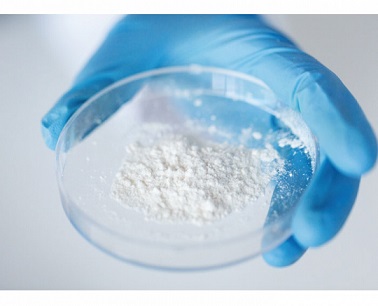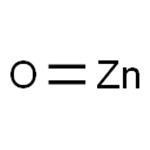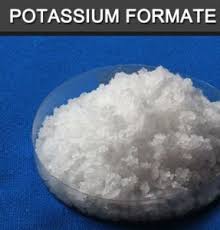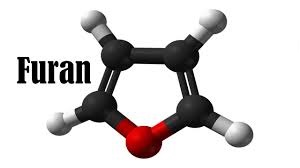zinc oxide boosts the performance of organic solar cells
Sep 20,2019
Organic solar cells are made of cheap and abundant materials, but their efficiency and stability still lag behind those of silicon-based solar cells. A Chinese-German team of scientists has found a way to enhance the electric conductivity of organic solar cells, which increases their performances. Doping the metal oxide interlayer, which connected the electrode and active layer, with a modified organic dye boosted both the efficiency and stability, the study published in the journal Angewandte Chemie revealed.

Organic dye in zinc oxide interlayer stabilizes and boosts the performance of organic solar cells
Organic solar cells convert light into electric current. The heart of the cells is the active organic layer made of specially designed organic molecules. Here, electrons and holes, the positive counterparts of the electrons, are generated by light and travel to the electrodes to form the electric current. A recurrent problem in organic solar cell design is the matching of the material types. The electrodes are made of inorganic materials, but the active layer is organic. To join the two materials, metal oxide interlayers are introduced in many organic cell types. But in most designs, the resulting conductivities are not optimal.
Frank Würthner at the University of Würzburg, Germany, and Zengqi Xie at the South China University of Technology (SCUT), Guangzhou, China, investigated the idea of making a zinc oxide interlayer slightly more organic and photoconductive to reduce the contact resistance when irradiated with sunlight. The scientists prepared an organic dye in such a way that it formed stable complexes with the zinc ions present in the zinc oxide layer. Under sunlight, this modified dye called hydroxy-PBI would then inject electrons into the zinc oxide interlayer, which would increase its conductivity.
The scientists then assembled the organic solar cell, which consisted of an indium tin oxide glass (ITO) electrode, the zinc oxide layer doped with the hydroxy-PBI dye, the active layer made of a polymer as the electron donor and an organic molecule as the acceptor, another metal oxide interlayer, and an aluminum electrode as the positive electrode. This architecture, which is called an inverted bulk heterojunction cell, is that of a state-of-the-art organic solar cell, which achieves a maximum 15 percent power conversion efficiency.
The interlayer doping was beneficial in several ways. Depending on the dye -- the scientists checked the performance of several dyes with slightly different structures -- conversion efficiencies of almost 16 percent were achieved. And the dye-doped zinc oxide interlayer also appeared to be more stable than one without the doping. The authors said that it was important that the PBI dye was modified to its hydroxy-PBI form, which gave rise to tight complexes with the zinc ions. Only then could an inorganic-organic hybrid structure evolve to form a good contact with the active materials.
ournal Reference:
Xinbo Wen, Agnieszka Nowak-Król, Oliver Nagler, Felix Kraus, Na Zhu, Nan Zheng, Matthias Müller, David Schmidt, Zengqi Xie, Frank Würthner. Tetrahydroxy-Perylene Bisimide Embedded in Zinc Oxide Thin Film as Electron Transporting Layer for High Performance Non-Fullerene Organic Solar Cells. Angewandte Chemie International Edition, 2019; DOI: 10.1002/anie.201907467
- Related articles
- Related Qustion
- Uses of Zinc oxide in different fields May 17, 2024
Zinc oxide is a versatile metal oxide. It has the appearance of a white powder and is used as a bulking or filling agent and as a white pigment.
- Zinc oxide: Properties, application and safety Mar 28, 2023
ZnO is a white powder that is insoluble in water. It is used as an additive in numerous materials and products including cosmetics, food supplements, rubbers, plastics, ceramics, glass, cement, etc.
Potassium Formate is a useful chemical compound in the production of potassium metal and in the oil and gas industry, often in aqueous solution (alone, or mixed with cesium formate), to yield a high-density, environmentally-friendly brine t....
Sep 20,2019Organic ChemistryFuran is a colorless, volatile liquid used in some chemical manufacturing industries. Furan has occasionally been reported to be found in foods. Now scientists at FDA have discovered that furan forms in some foods more commonly than previou....
Sep 20,2019Organic ChemistryZinc oxide
1314-13-2You may like
- Rolapitant Synthesis
Dec 22, 2025
- Synthesis of 2-(2-Chlorophenyl)cyclohexanone
Dec 22, 2025
- Preparation methods and application of 2-(2-Ethoxyethoxy)ethyl acrylate
Dec 22, 2025
- Zinc oxide
-

- 2025-12-22
- CAS:1314-13-2
- Min. Order:
- Purity: 0.99
- Supply Ability:
- Zinc oxide
-

- $0.00 / 1g
- 2025-12-22
- CAS:1314-13-2
- Min. Order: 1g
- Purity: 99%
- Supply Ability: 20000000t
- Zinc Oxide
-

- $500.00 / 25kg PP/PE bags
- 2025-12-22
- CAS:1314-13-2
- Min. Order: 1000kg PP/PE bags
- Purity: 0.99
- Supply Ability: 100 Metric Ton/Metric Tons per Year






